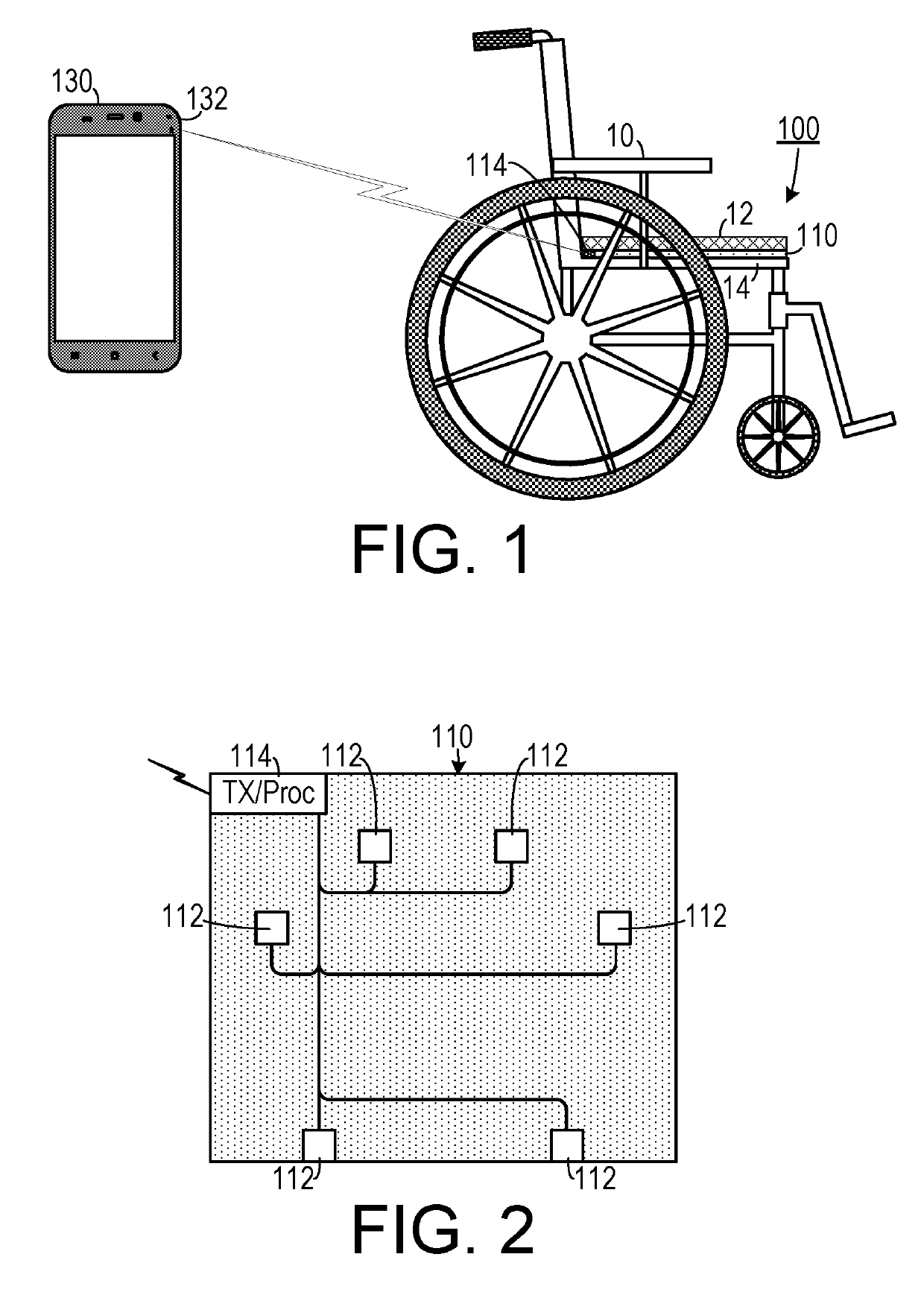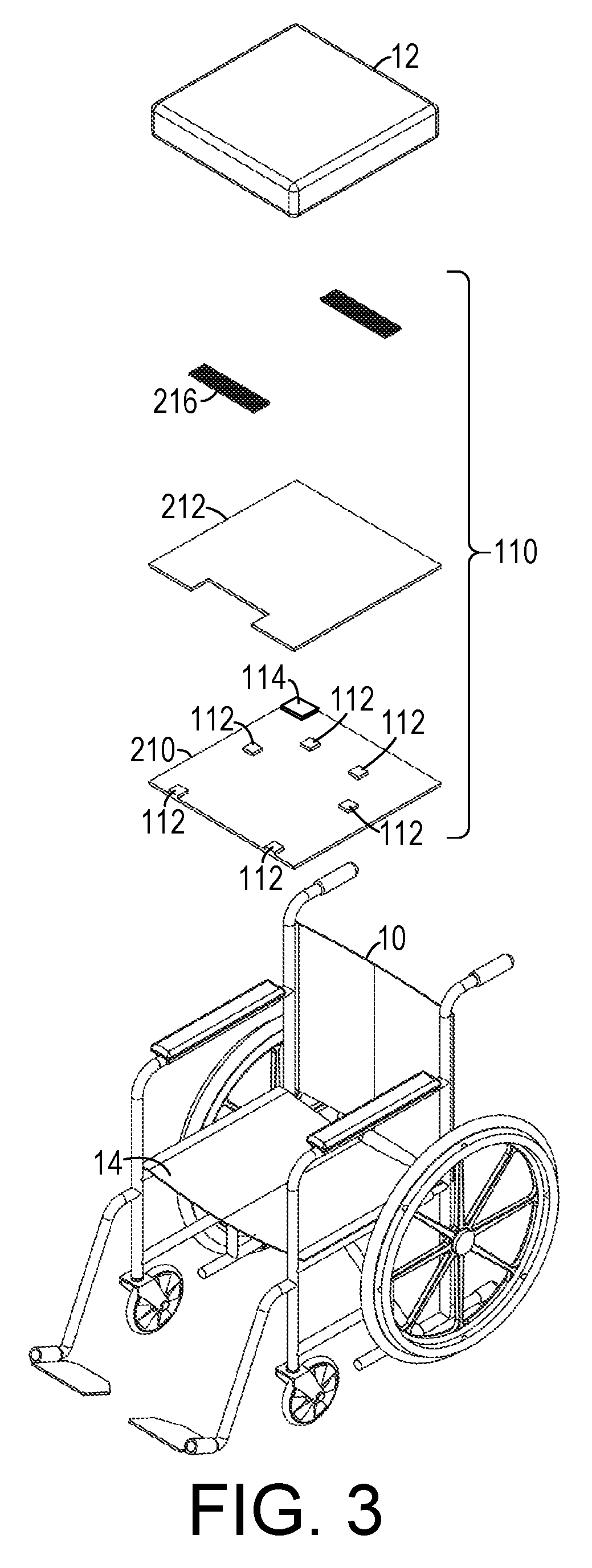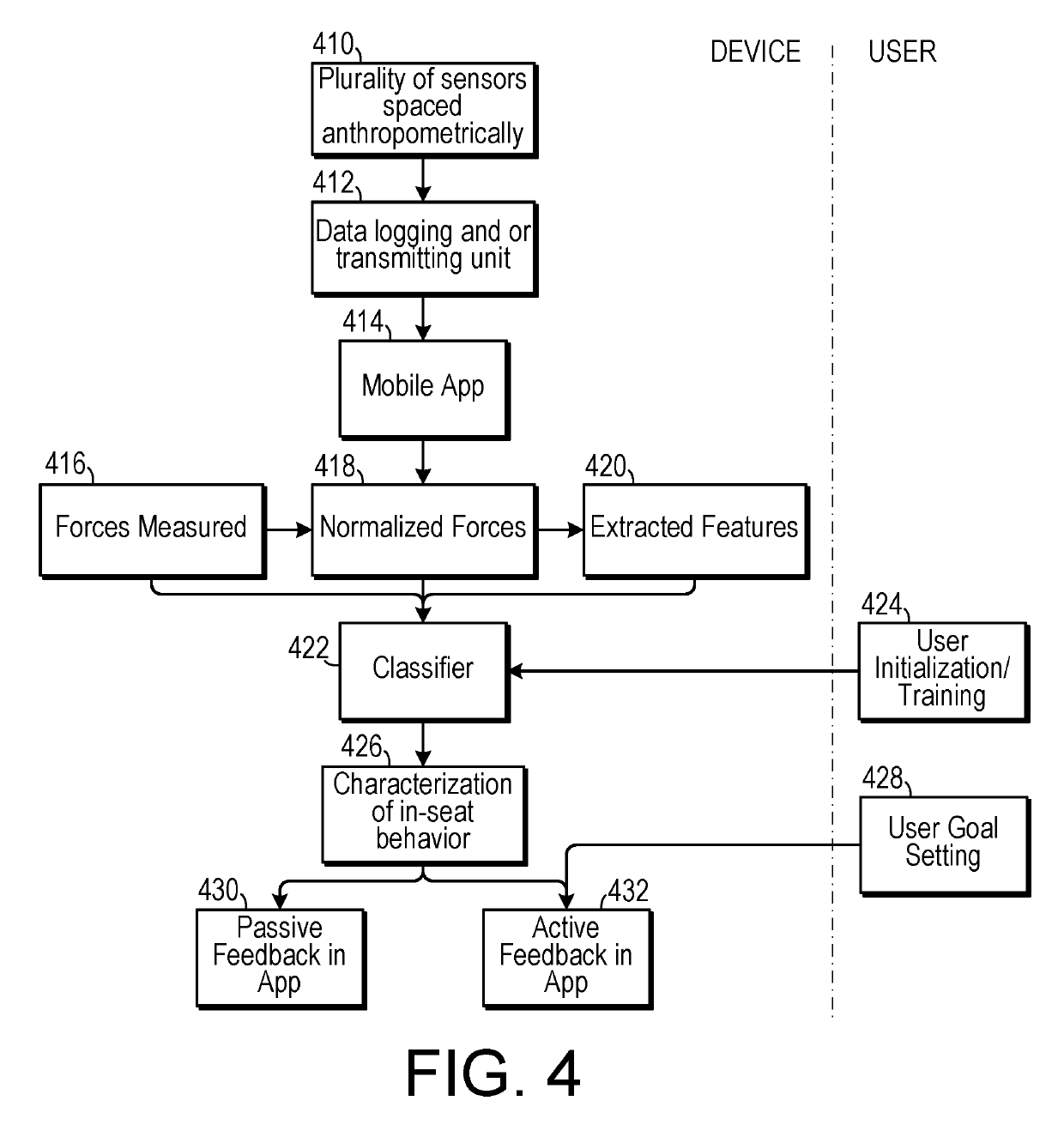Wheelchair in-seat activity tracker
a technology for activity tracking and wheel chairs, applied in the field of sensor units, can solve the problems of increased mortality, host of health problems, fatigue and discomfort,
- Summary
- Abstract
- Description
- Claims
- Application Information
AI Technical Summary
Benefits of technology
Problems solved by technology
Method used
Image
Examples
Embodiment Construction
[0021]A preferred embodiment of the invention is now described in detail. Referring to the drawings, like numbers indicate like parts throughout the views. Unless otherwise specifically indicated in the disclosure that follows, the drawings are not necessarily drawn to scale. As used in the description herein and throughout the claims, the following terms take the meanings explicitly associated herein, unless the context clearly dictates otherwise: the meaning of “a,”“an,” and “the” includes plural reference, the meaning of “in” includes “in” and “on.”
[0022]As shown in FIGS. 1-3, one embodiment of an in-seat behavior characterization system can include a seat, such as a wheelchair 10 that includes a platform 14 upon which a cushion 12 is placed. (In other embodiments, the seat could be, for example, an airline seat or one of many other types of seats.) A sensor mat 110 that includes a plurality of sensors is placed of the platform 14 underneath the cushion 12. The sensor mat 110 eit...
PUM
 Login to View More
Login to View More Abstract
Description
Claims
Application Information
 Login to View More
Login to View More - R&D
- Intellectual Property
- Life Sciences
- Materials
- Tech Scout
- Unparalleled Data Quality
- Higher Quality Content
- 60% Fewer Hallucinations
Browse by: Latest US Patents, China's latest patents, Technical Efficacy Thesaurus, Application Domain, Technology Topic, Popular Technical Reports.
© 2025 PatSnap. All rights reserved.Legal|Privacy policy|Modern Slavery Act Transparency Statement|Sitemap|About US| Contact US: help@patsnap.com



